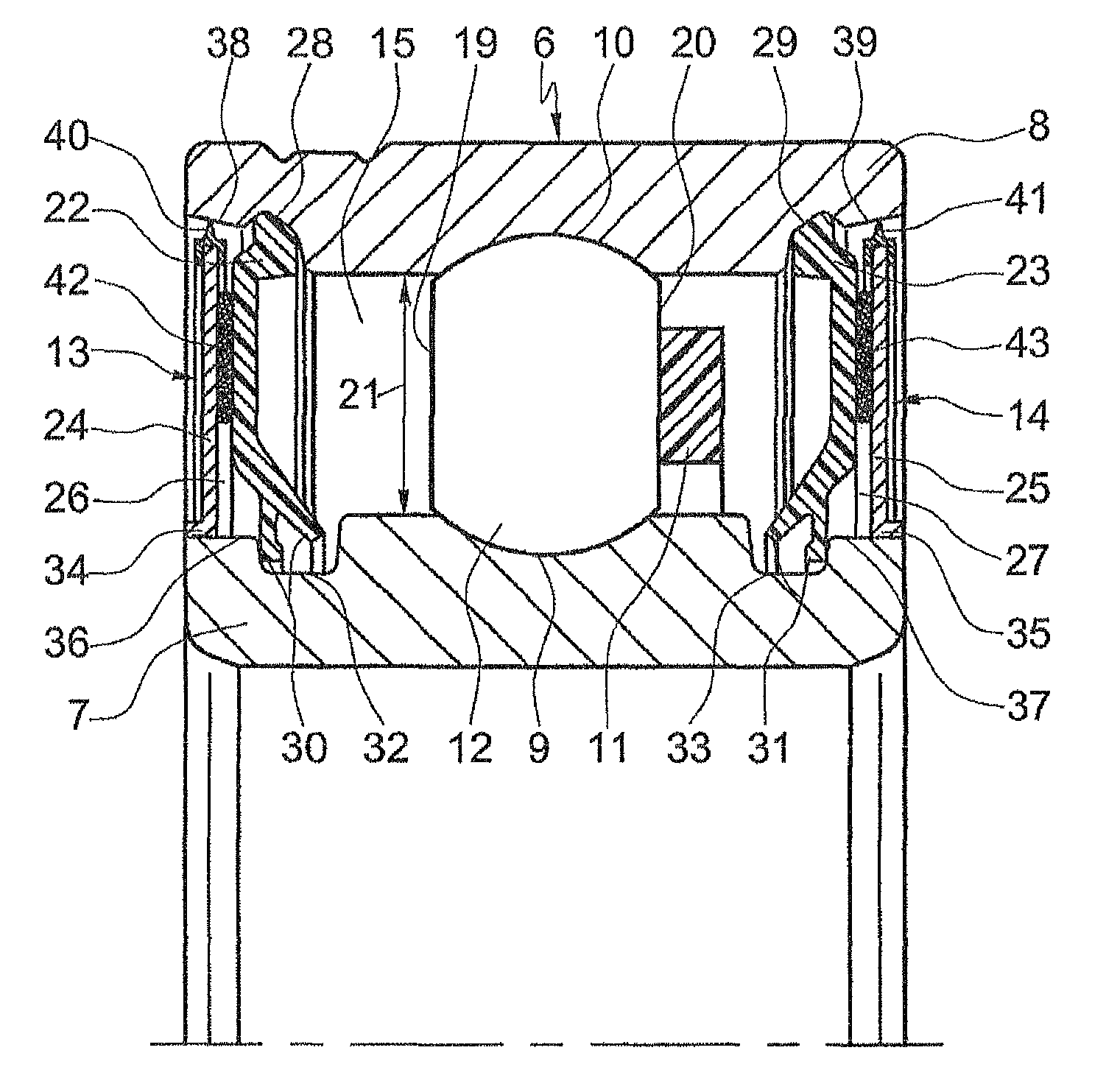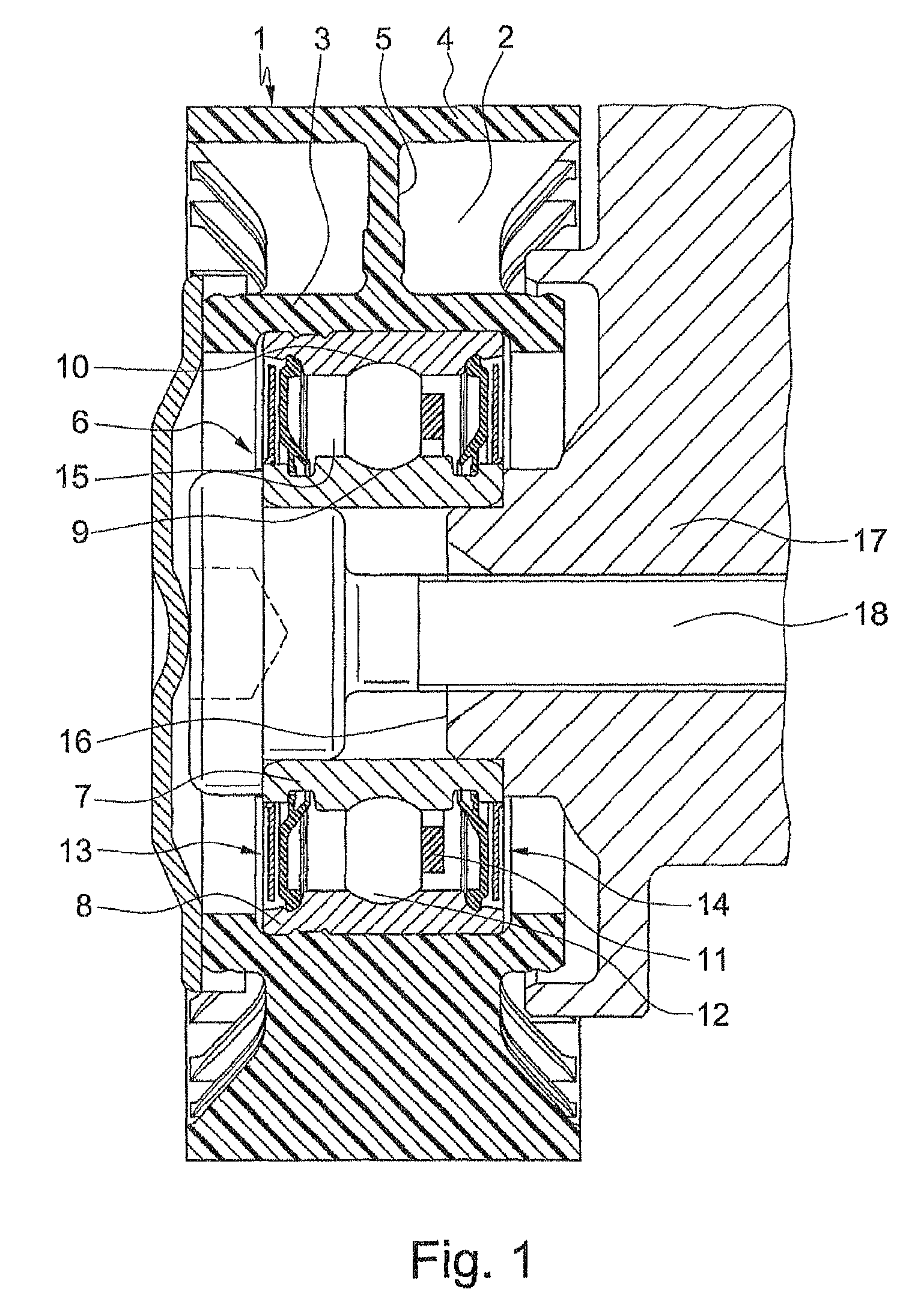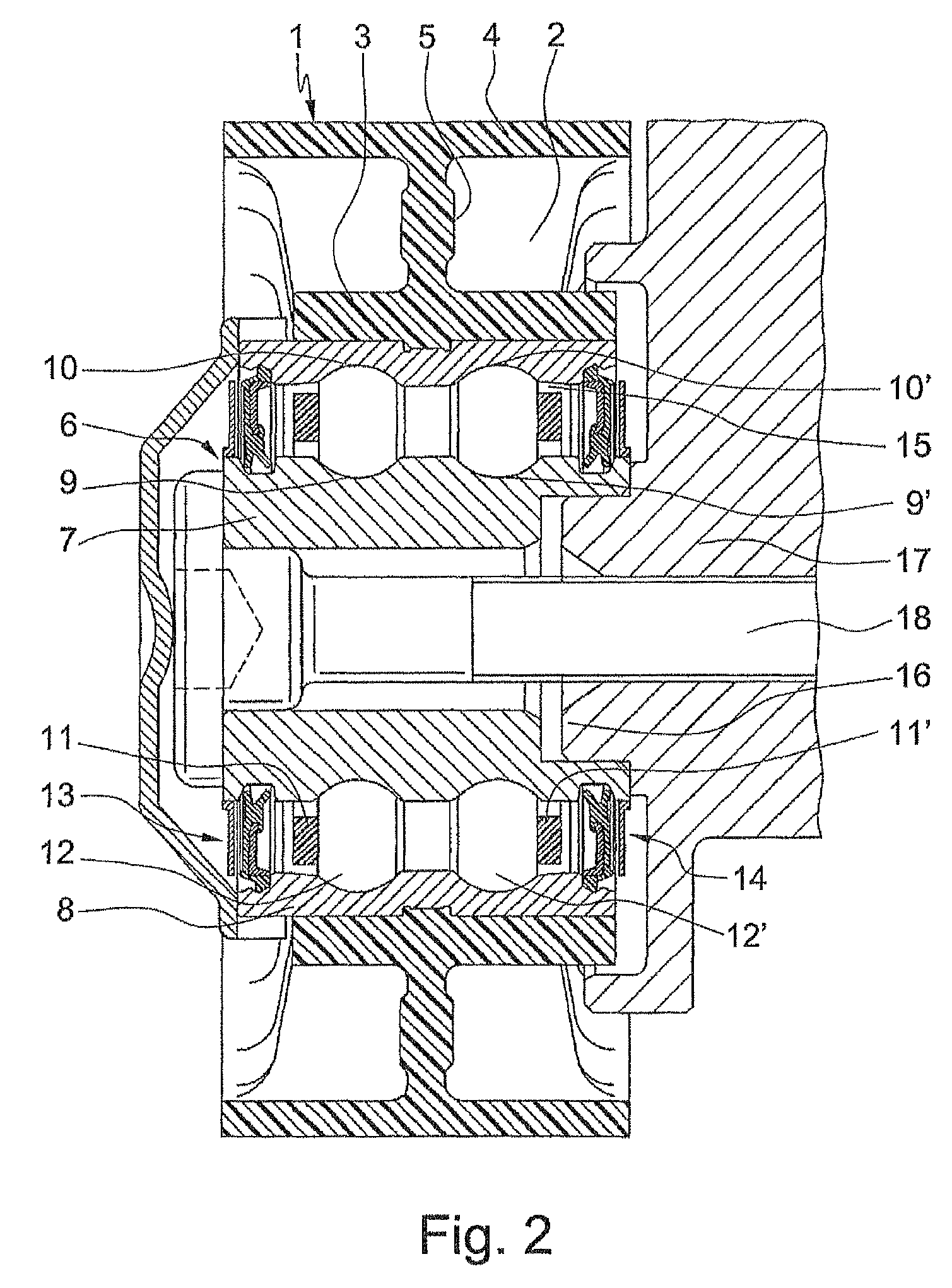Tensioning or deflector pulley in particular for the belt drive on an internal combustion engine
a technology of deflector pulleys and internal combustion engines, which is applied in the direction of gearing, mechanical equipment, hoisting equipment, etc., can solve the problems of limited load-bearing capacity, increased wear, and the inability to fully fill the bearing with bearing balls by means of this mounting method, so as to improve the load-bearing capacity, reduce wear, and increase the useful life
- Summary
- Abstract
- Description
- Claims
- Application Information
AI Technical Summary
Benefits of technology
Problems solved by technology
Method used
Image
Examples
Embodiment Construction
[0011]According to the invention, in a tensioning or deflector pulley, this object is achieved in that the radial rolling bearing is designed as a spherical roller bearing. The rolling bodies of the radial rolling bearing are designed as spherical rollers with two side faces flattened symmetrically from a basic spherical shape and arranged parallel to one another. The spherical roller bearing has, in relation to a comparable ball bearing, an increased load-bearing capacity due to the higher number of mountable rolling bodies and, at the same time, an enlarged grease repository due to the reduced construction space of the rolling bodies.
[0012]Preferred embodiments and advantageous developments of the tensioning or deflector pulley designed according to the invention are described in the subclaims.
[0013]Thus, in the tensioning or deflector pulley designed according to the invention, there is provision for the rolling bodies of the radial rolling bearing which are designed as spherical...
PUM
 Login to View More
Login to View More Abstract
Description
Claims
Application Information
 Login to View More
Login to View More - R&D
- Intellectual Property
- Life Sciences
- Materials
- Tech Scout
- Unparalleled Data Quality
- Higher Quality Content
- 60% Fewer Hallucinations
Browse by: Latest US Patents, China's latest patents, Technical Efficacy Thesaurus, Application Domain, Technology Topic, Popular Technical Reports.
© 2025 PatSnap. All rights reserved.Legal|Privacy policy|Modern Slavery Act Transparency Statement|Sitemap|About US| Contact US: help@patsnap.com



